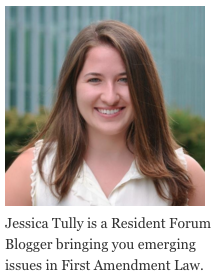In 2006, the United States Supreme Court issued one of its most controversial First Amendment decisions in decades in Garcetti v. Ceballos. Some critics say that the decision created an additional hurdle for public employees to clear when they speak out about a problem at work. David Hudson Jr., a professor at Vanderbilt Law School, went as far as calling the Garcetti decision one of the five greatest threats to free speech facing the United States today.
In Garcetti, Richard Ceballos, a calendar deputy in the Los Angeles District Attorney’s Office, wrote an office memorandum stating that a case he was working on should be dismissed because a law enforcement officer committed perjury. Ceballos’s supervisors decided to continue to prosecute the case over Ceballos’s objections. After being reassigned and denied a promotion, Ceballos sued, claiming that his employer retaliated against him for his critical memo.
The Supreme Court with a five-justice majority reversed the Ninth Circuit and found that when Ceballos wrote the memo, he was not protected by the First Amendment because he spoke as a public employee, not as a citizen.
Ceballos’s supervisors indicated that they thought his analysis was poor. The Court agreed with the employer that the First Amendment does not prevent the government from favoring employees who write good-quality memos and disfavoring those who write poor ones.
The Garcetti decision affected a Seventh Circuit decision just one year later in Morales v. Jones. There, a police officer reported to an assistant district attorney that his police chief was harboring a fugitive. The officer was then demoted, leading the officer to file a lawsuit against the police chief and the City of Milwaukee. The Seventh Circuit found that the officer’s speech was made as a part of his official duties. Thus, the First Amendment did not protect reporting the information to the assistant district attorney.
Much of the criticism aimed at Garcetti has been directed at how judges will determine whether an employee’s speech is job-related or contains elements of protected citizen speech. Other critics, including the Modern Language Association, read the decision broadly for the proposition that public employees, including professors at public universities, no longer have any First Amendment protection for statements made in the course of their professional duties.
“The problem is that oftentimes employees’ job-related speech is important for the larger public,” Hudson wrote. “Sometimes speaking out in a government workplace can fix a problem, expose corruption, inform the public or improve operations. Yet Garcetti gives employers a large shield to thwart even legitimate free-speech complaints.”
Others suggest that the response to the Garcetti decision should not have been so negative. Kermit Roosevelt III, a professor at the University of Pennsylvania Law School, wrote in the Journal of Constitutional Law that the decision is “not as bad as you think.”
Roosevelt points out that the Court affirmed the right of an employer to exercise control over what an employer has commissioned. He argues that a government employer should be able to evaluate an employee’s performance without a First Amendment implication. Roosevelt points to the Court’s reasoning: “When he went to work and performed the tasks he was paid to perform, Ceballos acted as a government employee. The fact that his duties sometimes required him to speak or write does not mean his supervisors were prohibited from evaluating his performance.”
When considering the government’s role in ensuring that the work quality of its employees is up to par, Roosevelt argues that the Garcetti decision is framed narrowly enough that it should be perceived more positively for public policy reasons: The government needs to be able to evaluate its employees.
“The government cannot be hands-off with its employees and agnostic as to the quality of their work product: employers must be able to evaluate employee job performance,” Roosevelt wrote. “Garcetti’s carveout is sensible in terms of both First Amendment values and managerial efficiency.”
Nine years later, there continues to be much debate about the Garcetti case among legal scholars. The most detrimental aspect of the opinion seems to be that the Garcetti case encourages public employees to complain to outside agencies so that they can receive the protection of the First Amendment, a result probably not intended by the Supreme Court.
Published December 28, 2015
